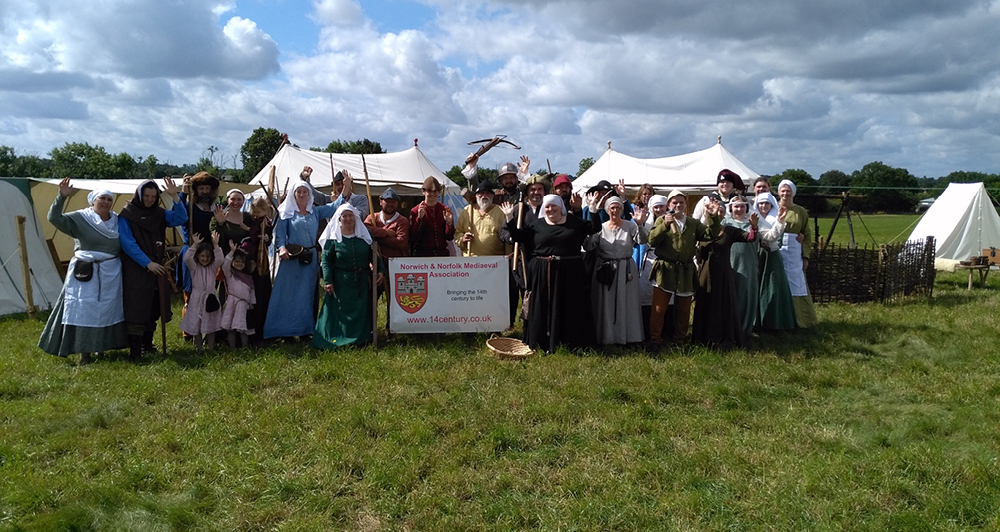The Norwich and Norfolk Medieval Association (NANMA) will re-enact the route taken by St Walstan’s corpse in 1016 to his final resting place in Bawburgh. The route of the oxen drawn cart – ‘hearse’ – from Taverham to Bawburgh via Costessey became an annual pilgrimage undertaken by hundreds and will be followed over the weekend of 28-29 May by members of the NANMA pilgrims in medieval clothes.
St Walstan was born, some claim in Bawburgh, a Prince of the royal house of East Anglia; as a young man he renounced all possessions and worked as a farm worker in central Norfolk. Legend records he received a message from an angel that he was to die in three days. He put down his scythe and sought out a priest in Taverham to receive the Last Rites: a spring issued forth to provide water where there had been none. The ‘hearse’ stopped to rest the oxen in Costessey and a second spring appeared. At its destination near the church in Bawburgh a third, and the largest, spring burst forth and the site is now marked by St Walstan’s Well. An annual church service is held at the Well on the Sunday closest to St Walstan’s Day, 30 May.
The NANMA pilgrims plan to join the 11am service in Bawburgh Church that will be led by the Rt Revd Dr Jane Steen, Bishop of Lynn on Sunday 29 May. The congregation will process to St Walstan’s Well, about 100 metres north of St Mary’s & St Walstan’s Church, for prayers to close the service. The Well may be accessed on foot via Church Street, Bawburgh. Bishop Jane is very much a 21st-Century theologian with a bounteous sense of humour that shines through her reflections.
Although not as internationally famous as the Camino de Santiago’s 780 km pilgrimage route, the warmth of welcome in Bawburgh by Bishop Jane and others will be as sincere as that given to pilgrims arriving at the tomb of St James (Santiago in Spanish) in Santiago de Compostela cathedral. Interestingly, both the cathedral and Bawburgh church structures date to a similar period in the 13th Century.


